Validation of Remote Sensing Retrieval Products using Data from a Wireless Sensor-Based Online Monitoring in Antarctica
Abstract
:1. Introduction
2. The Wireless Sensor-Based Online Monitoring Platform (WSOOP) for Extreme Environments
2.1. The Architecture of WSOOP
2.2. The Special Design against Extreme Environments
(1) On cold resistance and low power consumption
(2) On integrated multi-interfaces
(3) On embedded smart insulated case
(4) On wind-solar complementary smart system of power management
3. The Application of the Platform
3.1. The Melting Monitoring System Using the WSOOP
3.2. Deployment of the Wireless Sensor Network
4. Data Analysis
5. Comparison with Remote Sensing Products
5.1. MODIS Surface Temperature Products
5.2. Microwave Brightness Temperature
5.3. Detection of Freezing-Melting Onset
6. Conclusions
Acknowledgments
Author Contributions
Conflicts of Interest
References
- Li, B.R.; Liu, S.L.; Guo, J.X.; Xi, Y. Polar remote sensing field validation system and comprehensive experiment. In Proceedings of the 26th Annual Meeting Chinese Geophysical Society, Ningbo, China, 17–20 October 2010; pp. 861–863. (In Chinese)
- Chen, L.Q. Study on the role of the Arctic and Antarctic regions in global change. Earth Sci. Front. 2002, 4, 245–253. [Google Scholar]
- Giammarini, M.; Isidori, D.; Pieralisi, M.; Cristalli, C.; Fioravanti, M.; Concettoni, E. Design of a low cost and high performance wireless sensor network for structural health monitoring. Microsyst. Technol. 2016, 22, 1845–1853. [Google Scholar] [CrossRef]
- Silvani, X.; Morandini, F.; Innocenti, E.; Peres, S. Evaluation of a Wireless Sensor Network with Low Cost and Low Energy Consumption for Fire Detection and Monitoring. Fire Technol. 2015, 51, 971–993. [Google Scholar] [CrossRef]
- Gui, Y.; Tao, Z.G.; Wang, C.J.; Xie, X. Study on remote monitoring system for landslide hazard based on wireless sensor network and its application. J. Coal Sci. Eng. China 2011, 17, 464–468. [Google Scholar] [CrossRef]
- López, J.A.; Garcia-Sanchez, A.J.; Soto, F.; Iborra, A.; Garcia-Sanchez, F.; Garcia-Haro, J. Design and validation of a wireless sensor network architecture for precision horticulture applications. Precision Agric. 2011, 12, 280–295. [Google Scholar] [CrossRef]
- Gong, P. Wireless Sensor Network as a New Ground Remote Sensing Technology for Environmental Monitoring. J. Remote Sens. 2007, 11, 545–551. [Google Scholar]
- Gong, P.; Cheng, X.; Li, X.H.; Wang, L.; Shen, S.Q. The Application of Wireless Sensor Network Technology in Ground Environment Sensing. J. Remote Sens. 2009, 13, 87–91. [Google Scholar]
- Liu, T.; Muye, N.I.U.; Wang, Z.; Huang, X.; Cao, L.; Tian, Z. An Effective Antarctic Ice Surface Temperature Retrieval Method for MODIS. Photog. Eng. Remote Sens. 2015, 81, 861–872. [Google Scholar] [CrossRef]
- Wang, Y.; Hou, S. Spatial distribution of 10 m firn temperature in the Antarctic ice sheet. Sci. China Earth Sci. 2011, 54, 655–666. [Google Scholar] [CrossRef]
- Heavner, M.; Fatland, R.; Hood, E.; Connor, C.; Habermann, M.; Gerner, L. Monitoring Lemon Glacier Using a Wireless Sensor Network in Juneau. Joint Meet. Geol. Soc. Am. 2008, 40, 397. [Google Scholar]
- Roberta, P. Surface albedo measurements over Antarctic sites in summer. J. Geophys. Res. Atmos. 2004. [Google Scholar] [CrossRef]
- Broeke, M.V.D.; As, D.V.; Reijmer, C.; Wal, R.V.D. Assessing and improving the quality of unattended radiation observations in Antarctica. J. Atmos. Ocean. Technol. 2004, 21, 1417–1431. [Google Scholar] [CrossRef]
- Li, X.H.; Cheng, X.; Yang, R.J.; Zhang, H.J.; Zhang, J.L.; Hui, F.M.; Wang, F. A multi-interface ice and snow remote monitoring platform in the Polar region. IEEE Sens. 2014, 14, 3738–3744. [Google Scholar] [CrossRef]
- Hugues, G.; Braida, M.; Crosta, X.; Mairesse, A.; Masson-Delmotte, V.; Mathiot, P.; Neukom, R.; Oerter, H.; Philippon, G.; Renssen, H.; et al. Antarctic temperature changes during the last millennium: Evaluation of simulations and reconstructions. Quat. Sci. Rev. 2012, 55, 75–90. [Google Scholar]
- Marshall, G.J.; Di Battista, S.; Naik, S.S.; Thamban, M. Analysis of a regional change in the sign of the SAM-Temperature relationship in Antarctica. Clim. Dyn. 2011, 36, 277–287. [Google Scholar] [CrossRef]
- Bian, L.; Lin, Z.; Zhang, D.; Zheng, X.; Lu, L. The vertical structure and seasonal changes of atmosphere ozone and temperature at Zhongshan Station over East Antarctica. Sci. China Earth Sci. 2012, 55, 262–270. [Google Scholar] [CrossRef]
- Xin, Y.; Bian, L.; Rinke, A.; Dethloff, K. Simulation and evaluation of 2-m temperature over Antarctica in polar regional climate model. Sci. China Earth Sci. 2014, 57, 703–709. [Google Scholar] [CrossRef]
- Liston, G.; Winther, J. Antarctic Surface and Subsurface Snow and Ice Melt Fluxes. J. Clim. 2005, 18, 1469–1481. [Google Scholar] [CrossRef]
- Qiu, Y.B.; Guo, H.D.; Shi, J.C.; Kang, S.C.; James, R.W.; Juha, L.; Jiang, L.M. The preliminary analysis of snow monitoring using AMSR-E and winter snow campaign over Tibet platean, China. In Proceedings of 2010 IEEE International Geoscience & Remote Sensing Symposium, Honolulu, HI, USA, 25–30 July 2010; pp. 2367–2370.
- Juha, L.; Jouni, P.; Andrew, R.; Anna, K.; Qiu, Y.B.; Chris, D. Multiple Layer Adaptation of HUT Snow Emission Model: Comparison with Experimental Data. IEEE Trans. Geosci. Remote Sens. 2010, 48, 2781–2794. [Google Scholar]
- Qiu, Y.; Guo, H.; Shi, J.; Lemmetyinen, J. An emissivity-based land surface temperature retrieval algorithm using AMSR-E microwave measurement. In Proceedings of the IGARSS, Munich, Germany, 22–27 July 2012.
- Markus, T.; Stroeve, J.C.; Miller, J. Recent changes in arctic sea ice melt onset, freezeup, and melt season length. J. Geophys. Res. 2009, 114. [Google Scholar] [CrossRef]
- Drobot, S.D.; Anderson, M.R. An improved method for determining snowmelt onset dates over Arctic sea ice using scanning multichannel microwave radiometer and special sensor microwave/imager data. J. Geophys. Res. 2001, 106, 24033–24049. [Google Scholar] [CrossRef]
- Smith, D.M. Observation of perennial Arctic sea ice melt and freeze-up using passive microwave data. J. Geophys. Res. 1998, 3, 27753–27769. [Google Scholar] [CrossRef]
- Bliss, A.C.; Anderson, M.R. Daily Area of Snow Melt Onset on Arctic Sea Ice from Passive Microwave Satellite Observations 1979–2012. Remote Sens. 2014, 6, 11283–11314. [Google Scholar] [CrossRef]
- Torinesi, O.; Fily, M.; Genthon, C. Variability and trends of the summer melt period of Antarctic Ice margins since 1980 from Microware sensors. J. Clim. 2003, 16, 1047–1060. [Google Scholar] [CrossRef]
- Wan, Z.; Li, Z.-L. A Physics-Based Algorithm for Retrieving Land-Surface Emissivity and Temperature from EOS/MODIS Data. IEEE Trans. Geosci. Remote Sens. 1997, 35, 980–996. [Google Scholar]
- Wan, Z.; Zhang, Y.; Zhang, Q.; Li, Z.-L. Validation of the land-surface temperature products retrieved from Terra Mode rate Resolution Imaging Spectroradiometer data. Remote Sens. Environ. 2002, 83, 163–180. [Google Scholar] [CrossRef]
- Wan, Z.; Li, Z.-L. Radiance-based validation of the V5 MODIS land-surface temperature product. Int. J. Remote Sens. 2008, 29, 5373–5393. [Google Scholar] [CrossRef]
- Abdalati, W.; Steffen, K.; Otto, C.; Jezek, K.C. Comparison of Brightness Temperatures from SSM/I Instruments on the DMSP F8 and F11 Satellites for Antarctica and the Greenland Ice Sheet. Int. J. Remote Sens. 1995, 16, 1223–1229. [Google Scholar] [CrossRef]
- Comiso, J.C. Characteristics of Arctic Winter Sea Ice from Satellite Multispectral Microwave Observations. J. Geophys. Res. 1986, 91, 975–994. [Google Scholar] [CrossRef]
- Liu, H.W.; Wang, L.; Jezek, K. Wavelet-Transform based edge detection approach to derivation of snowmelt onset, end and duration from satellite passive microwave measurements. Int. J. Remote Sens. 2005, 26, 4639–4660. [Google Scholar] [CrossRef]
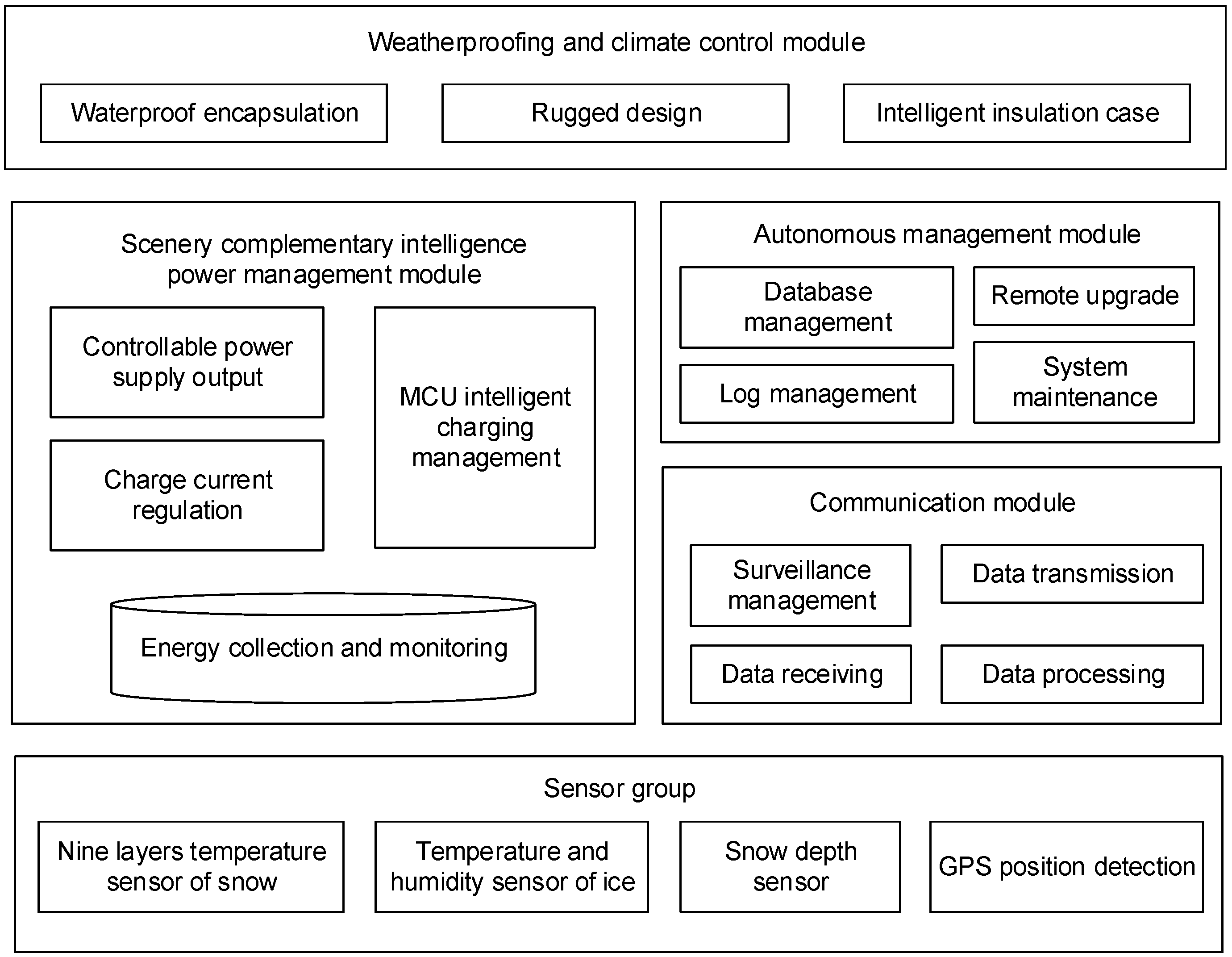
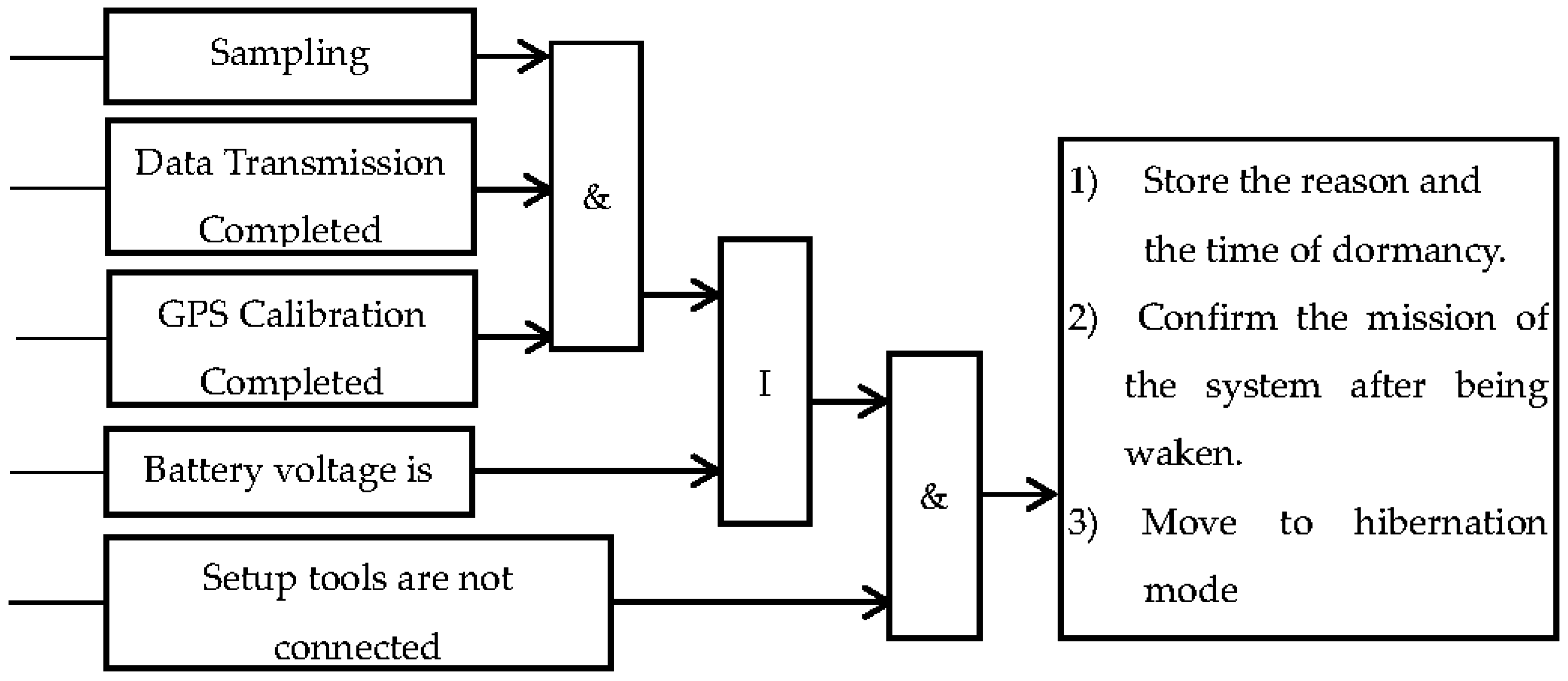
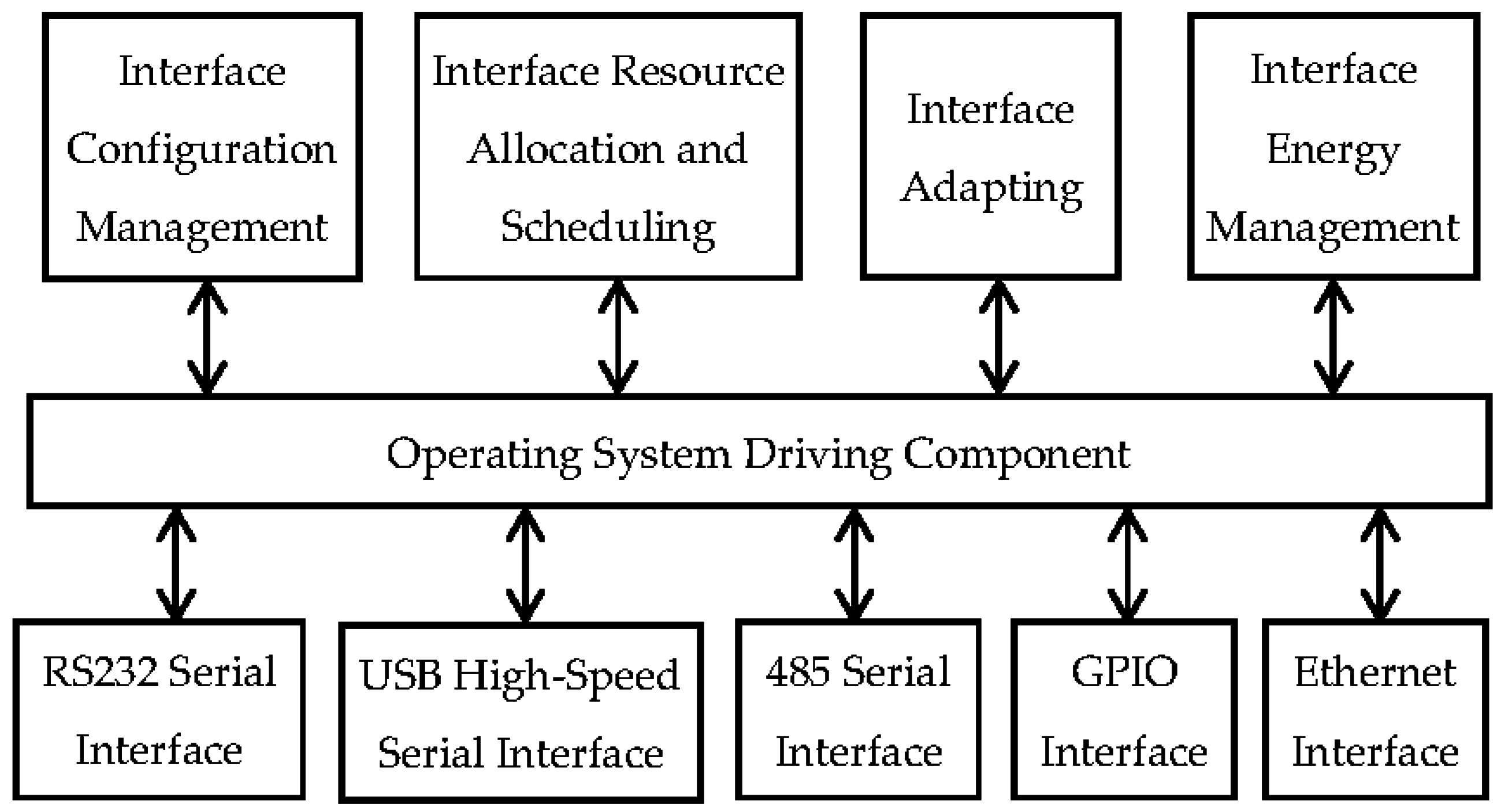
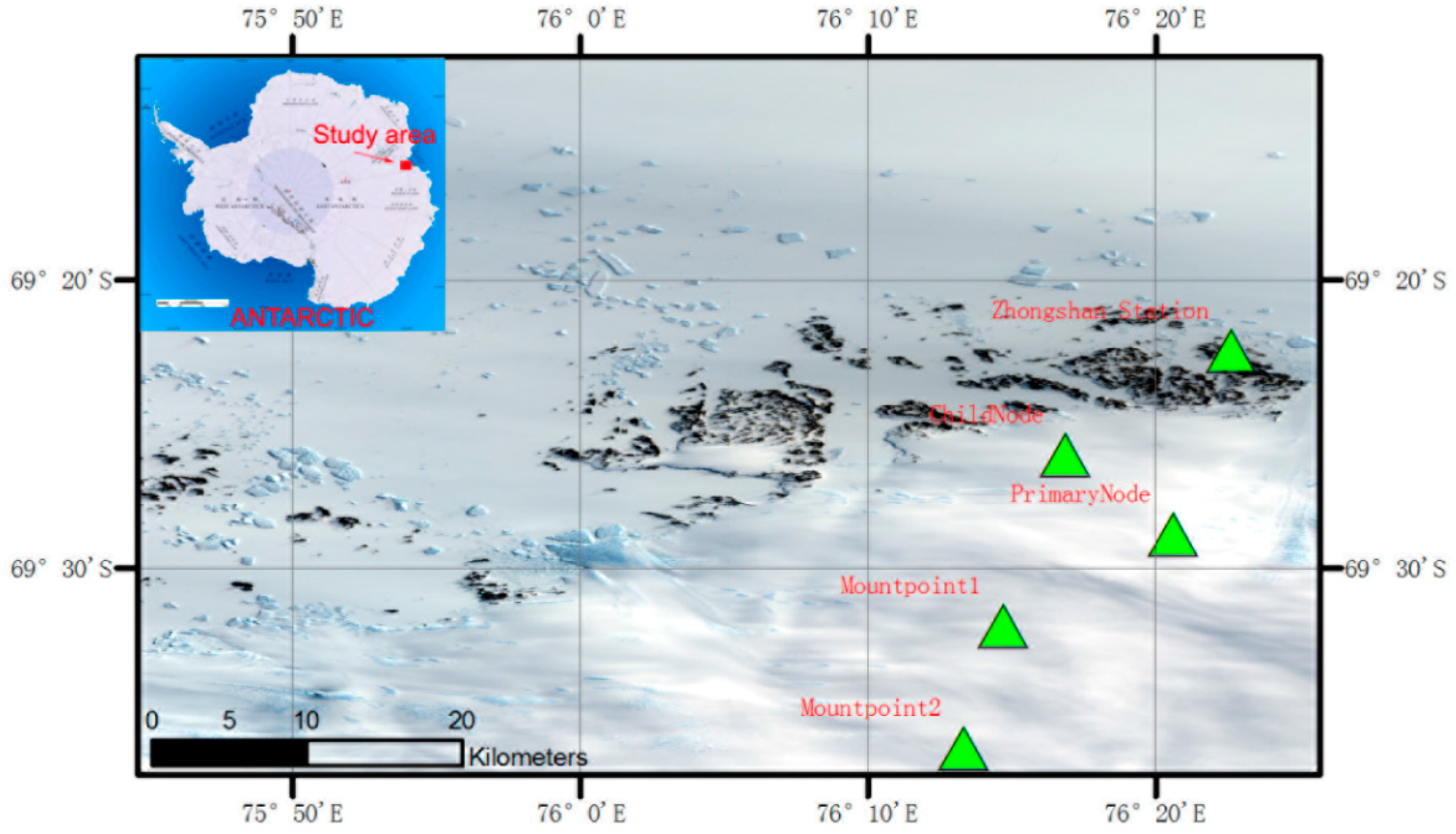
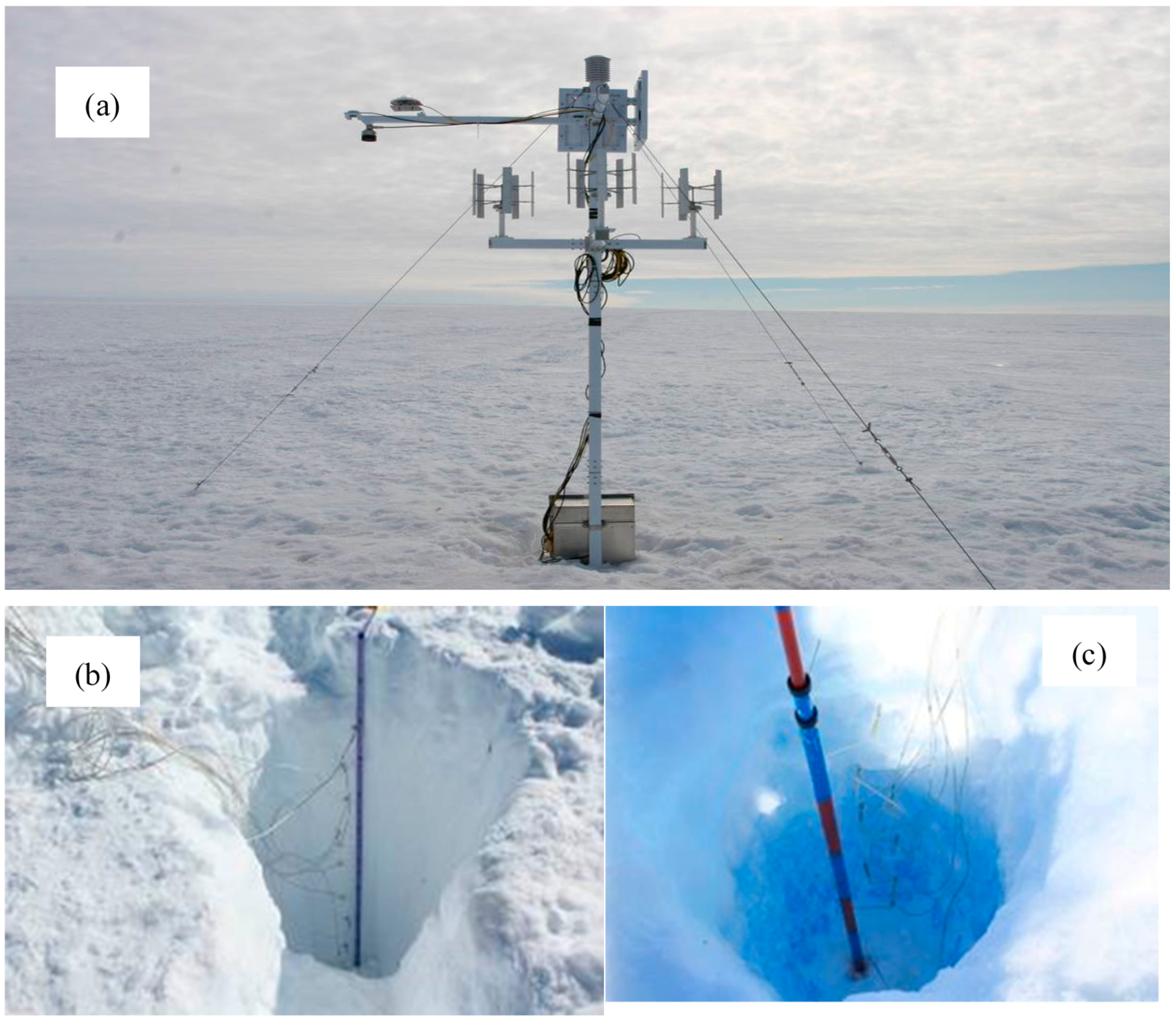
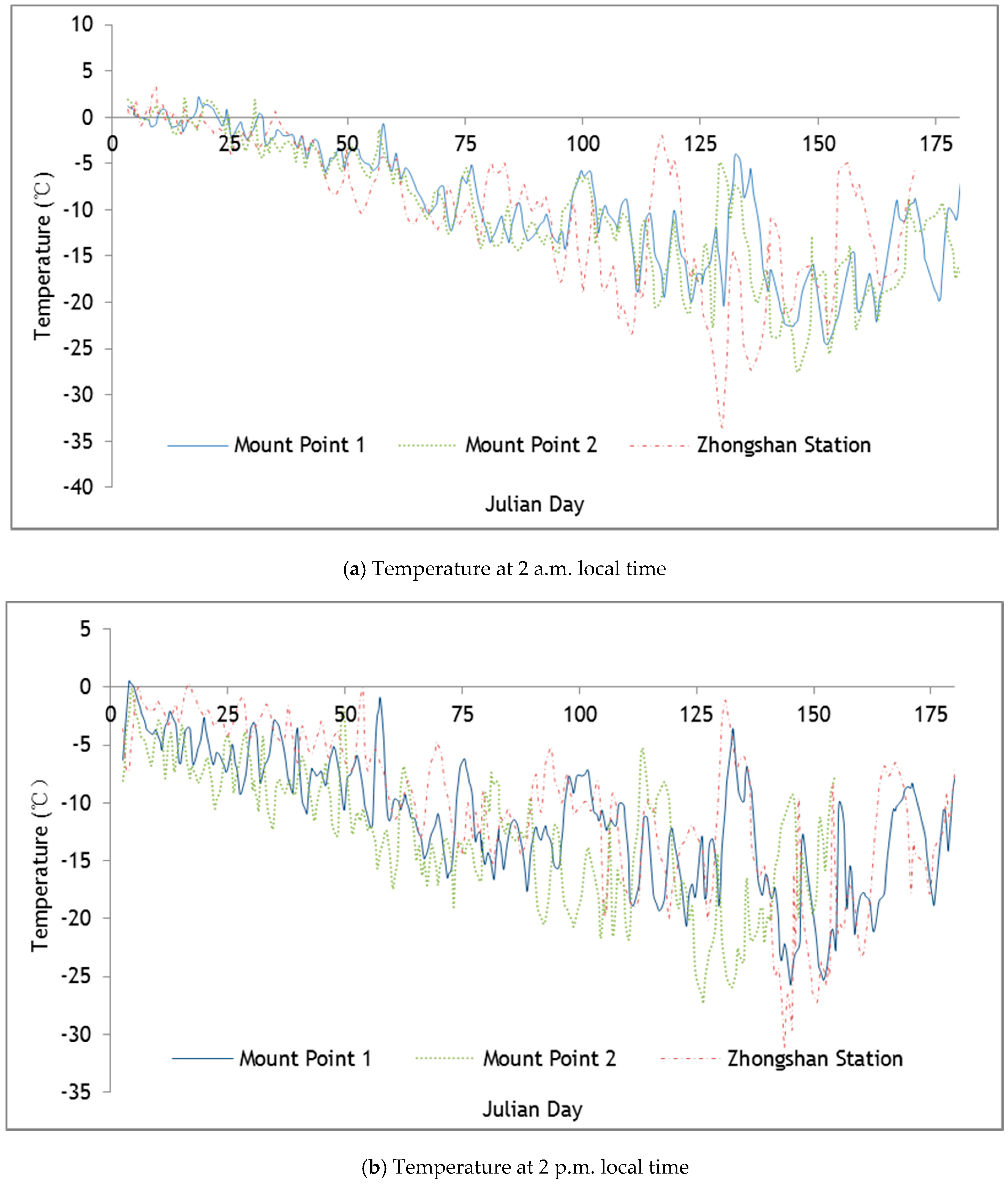
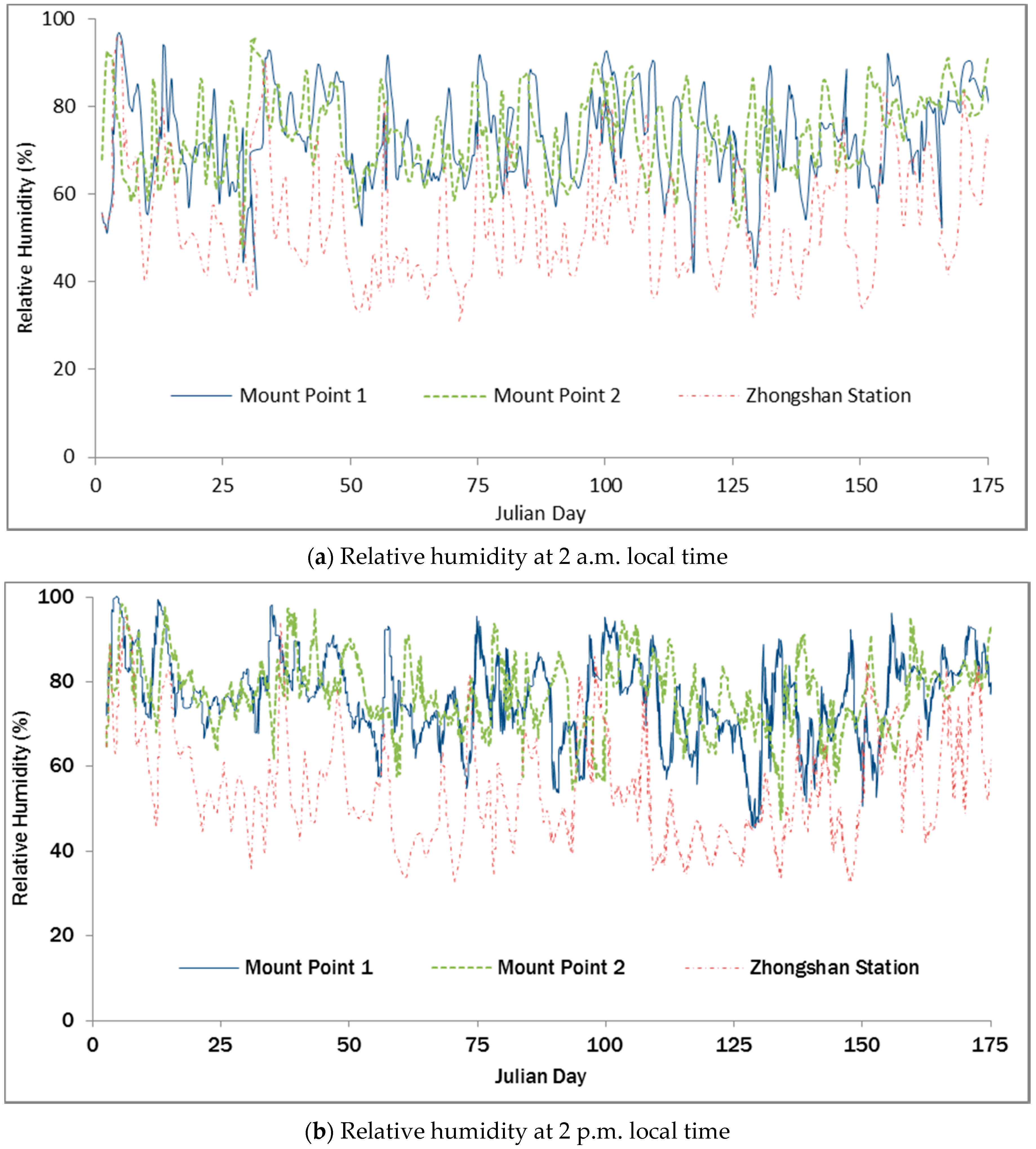
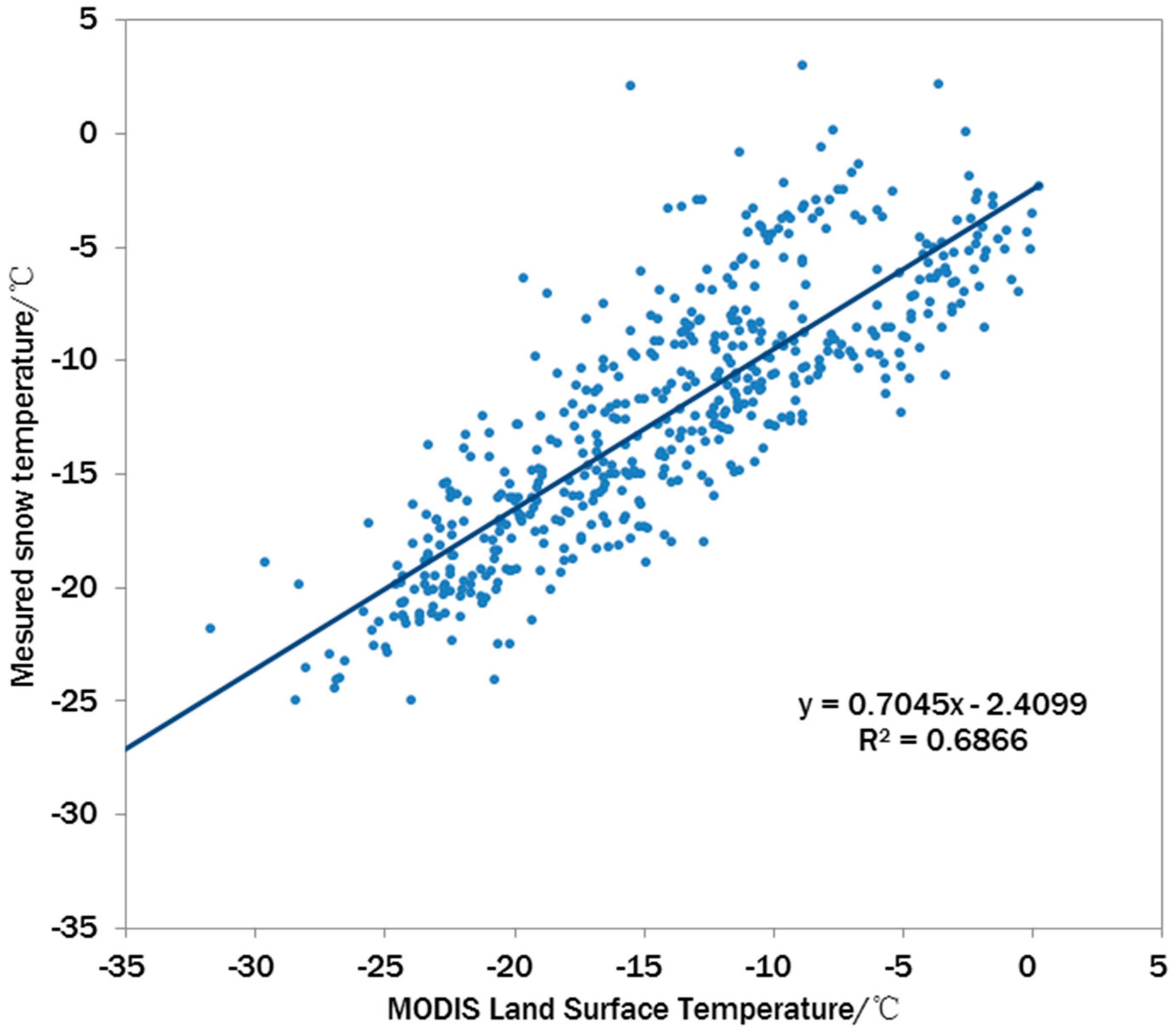
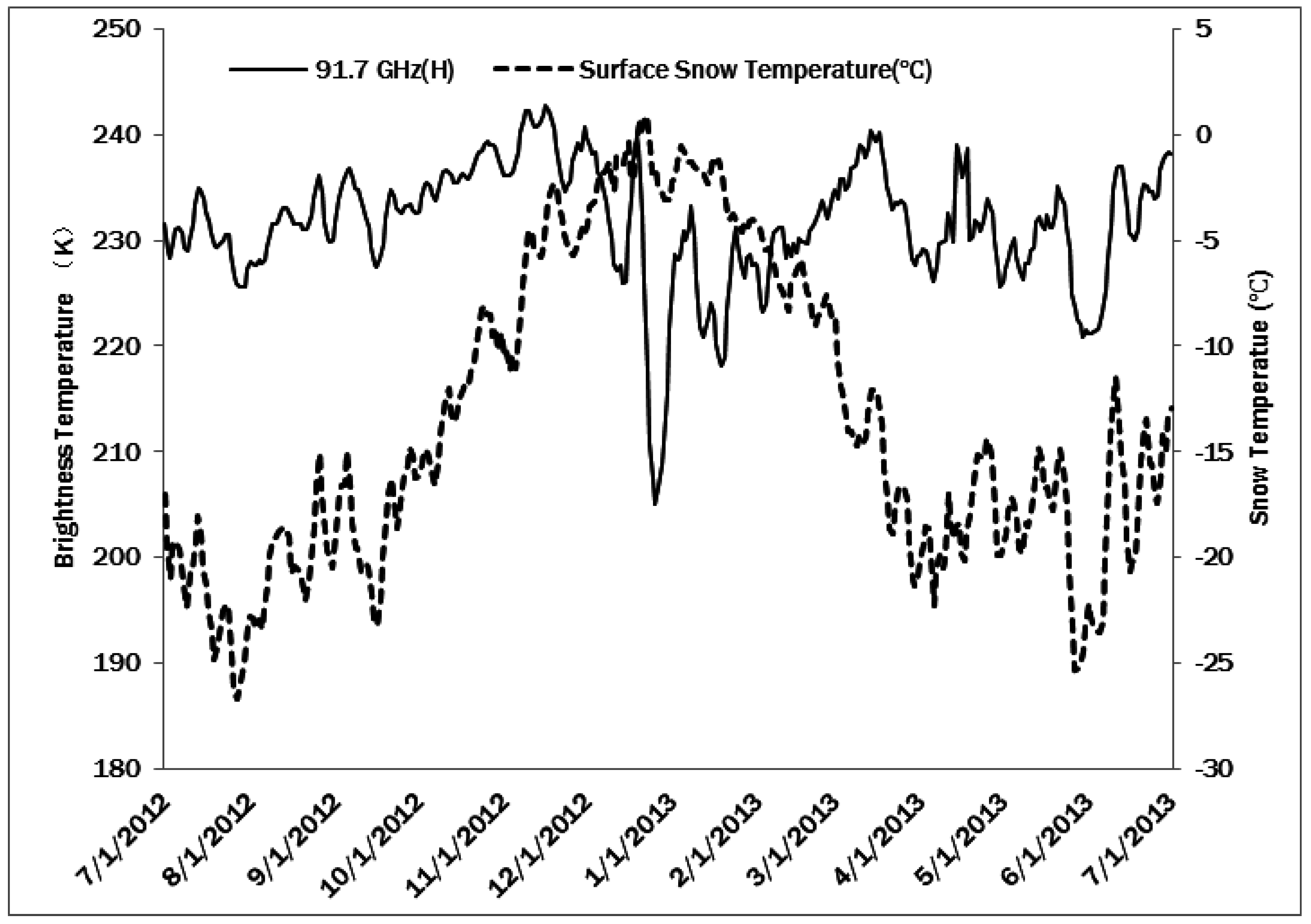
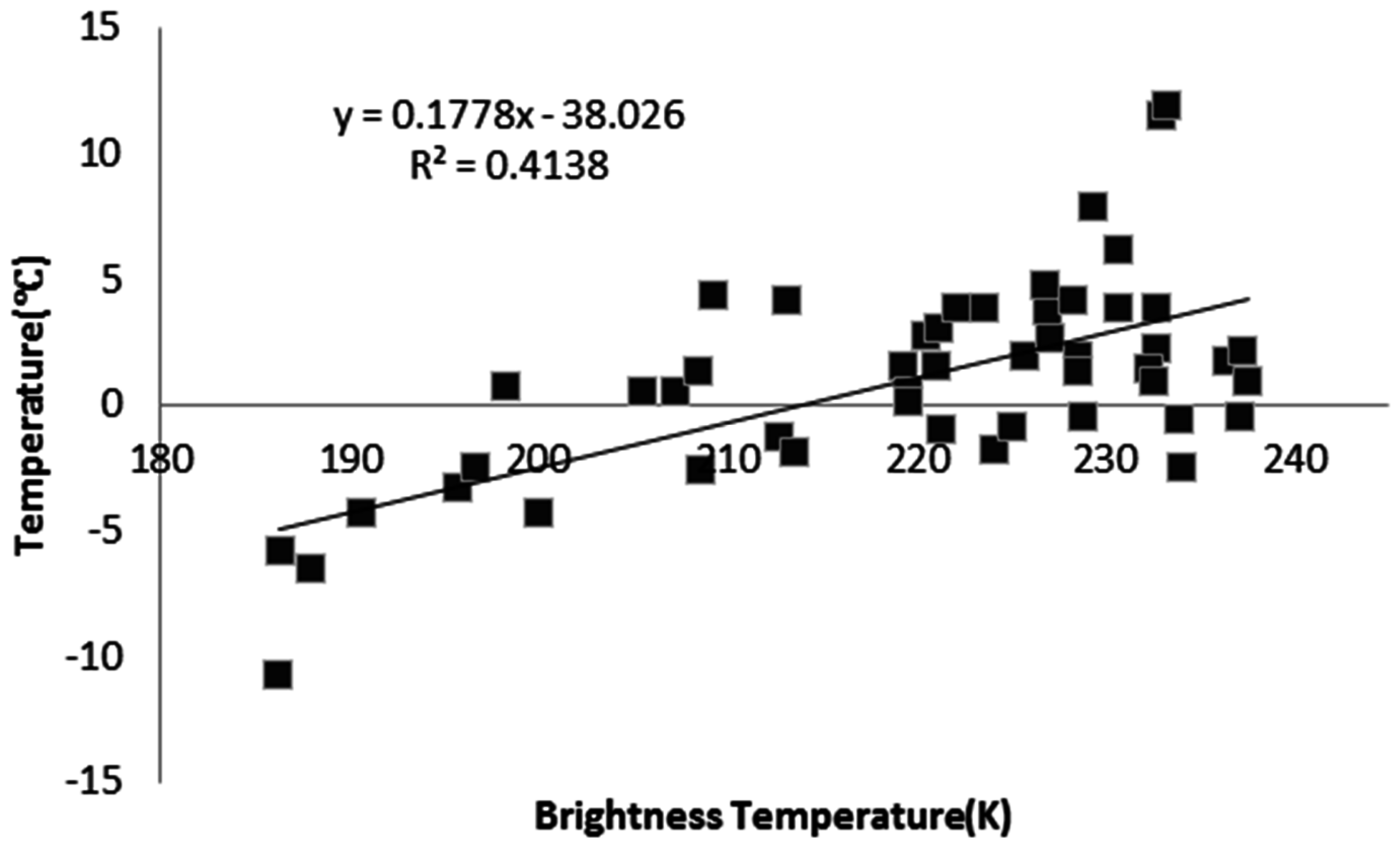
| Name | Type | Accuracy | Size | Operating Temperature | Company |
|---|---|---|---|---|---|
| Temperature and Relative Humidity Probe | HMP45C | ±2%RH/±0.2 °C | Length: 25.4 cm | 0%–100%RH/−39.2 °C–+60 °C | Campbell Scientific, Inc. (Logan, UT, USA) |
| Diameter: 2.5 cm | |||||
| AT Sonic Ranging Sensor | SR50A | ±1 cm or 0.4% of distance to target | Length: 10.1 cm | −45 °C–+50 °C | Campbell Scientific, Inc. (Logan, UT, USA) |
| Diameter: 7.6 cm | |||||
| Pyranometer | CMP11 | <±2.5% | Width: 7.9 cm | −40 °C–+80 °C | Campbell Scientific, Inc. (Logan, UT, USA) |
| Height: 6.7 cm | |||||
| Dome Diameter: 3.2 cm | |||||
| Pressure Sensor | MS5534c | 0.1 mbar | 9 mm × 9 mm | −40 °C–+125 °C | Intersema (Bevaix, Switzerland) |
| Temperature Sensor | PT100 | ±0.010 °C | 2 cm | −85 °C–+85 °C | Anhui Jingshifangyuan Inc. (ChiZhou, China) |
| Name | Location | Factors |
|---|---|---|
| Primary Node | 69°28′45.85′′ S, 76°20′39.40′′ E | Air temperature, air humidity, wind speed, wind destination, snow depth, atmospheric pressure and nine-tier snow temperature (the temperature in the first layer is named the surface snow temperature) |
| Child Node | 69°26′1′′ S, 76°16′55′′ E | Air temperature, air humidity, and nine-tier snow temperature |
| Mountpoint1 | 69°31′56.38′′ S, 76°14′45.10′′ E | Air temperature, air humidity, and nine-tier snow temperature |
| Mountpoint2 | 69°36′11.45′′ S, 76°13′22.75′′ E | Air temperature, air humidity, and nine-tier snow temperature |
© 2016 by the authors; licensee MDPI, Basel, Switzerland. This article is an open access article distributed under the terms and conditions of the Creative Commons Attribution (CC-BY) license (http://creativecommons.org/licenses/by/4.0/).
Share and Cite
Li, X.; Cheng, X.; Yang, R.; Liu, Q.; Qiu, Y.; Zhang, J.; Cai, E.; Zhao, L. Validation of Remote Sensing Retrieval Products using Data from a Wireless Sensor-Based Online Monitoring in Antarctica. Sensors 2016, 16, 1938. https://doi.org/10.3390/s16111938
Li X, Cheng X, Yang R, Liu Q, Qiu Y, Zhang J, Cai E, Zhao L. Validation of Remote Sensing Retrieval Products using Data from a Wireless Sensor-Based Online Monitoring in Antarctica. Sensors. 2016; 16(11):1938. https://doi.org/10.3390/s16111938
Chicago/Turabian StyleLi, Xiuhong, Xiao Cheng, Rongjin Yang, Qiang Liu, Yubao Qiu, Jialin Zhang, Erli Cai, and Long Zhao. 2016. "Validation of Remote Sensing Retrieval Products using Data from a Wireless Sensor-Based Online Monitoring in Antarctica" Sensors 16, no. 11: 1938. https://doi.org/10.3390/s16111938
APA StyleLi, X., Cheng, X., Yang, R., Liu, Q., Qiu, Y., Zhang, J., Cai, E., & Zhao, L. (2016). Validation of Remote Sensing Retrieval Products using Data from a Wireless Sensor-Based Online Monitoring in Antarctica. Sensors, 16(11), 1938. https://doi.org/10.3390/s16111938






